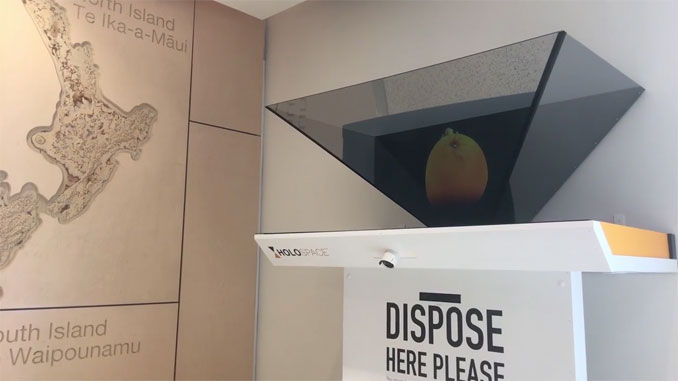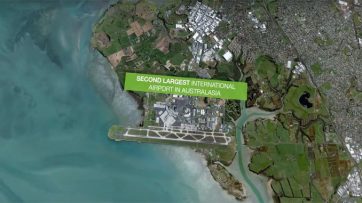The New Zealand government is trialling new hologram technology at Auckland International Airport to help international passengers understand the importance of biosecurity at the border.
The hologram will give a 3D display of biosecurity risk items, initially focusing on fruit carried inside baggage. The display then follows a hitchhiking fruit fly and the potential damage that it could do to an orchard and the fruit industry.
The Ministry for Primary Industries (MPI) is the government department responsible for the trial.
Brett Hickman, Manager of Detection Technology for MPI:
“This is an experiment to test if new technology can be used as a communications tool to reach the public more effectively than our current static signage at the airport.
“The concept here is to create an eye-catching display that really grabs the attention of arriving passengers.”
The hologram display will be housed on top of a purpose-built unit that doubles as an amnesty bin for visitors to dispose of any potential biosecurity risk goods they may still be carrying in hand luggage.
The hologram will undergo a 6-month trial at the airport in a range of locations within the arrivals area. MPI will monitor how many people stop to look at the display, as well as how much biosecurity material is placed into the unit’s amnesty bin to understand the viability of the trial.
The hologram is developed by Wellington company Point Zero who specialise in holographic display technology.
N.B. Image credit: Ministry for Primary Industries
Internet links
Auckland International Airport (AKL)







